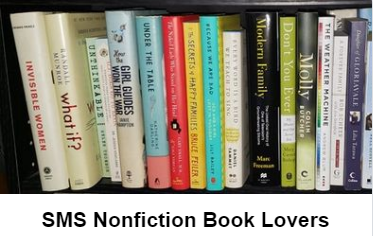A book review of First Bite: How We Learn to Eat by Bee Wilson
Stars: *****
Basic Books (2015)
History>Food or Food Science
352 pages
Disclosure: This post contains affiliate links.
Summary: We are not born knowing what to eat; as omnivores it is something we each have to figure out for ourselves. From childhood onward, we learn how big a “portion” is and how sweet is too sweet. We learn to enjoy green vegetables — or not. But how does this education happen? What are the origins of taste?
In First Bite, award-winning food writer Bee Wilson draws on the latest research from food psychologists, neuroscientists, and nutritionists to reveal that our food habits are shaped by a whole host of factors: family and culture, memory and gender, hunger and love. Taking the reader on a journey across the globe, Wilson introduces us to people who can only eat foods of a certain color; prisoners of war whose deepest yearning is for Mom’s apple pie; a nine year old anosmia sufferer who has no memory of the flavor of her mother’s cooking; toddlers who will eat nothing but hotdogs and grilled cheese sandwiches; and researchers and doctors who have pioneered new and effective ways to persuade children to try new vegetables. Wilson examines why the Japanese eat so healthily, whereas the vast majority of teenage boys in Kuwait have a weight problem — and what these facts can tell Americans about how to eat better.
The way we learn to eat holds the key to why food has gone so disastrously wrong for so many people. But Wilson also shows that both adults and children have immense potential for learning new, healthy eating habits. An exploration of the extraordinary and surprising origins of our tastes and eating habits, First Bite also shows us how we can change our palates to lead healthier, happier lives.
First Bite
This was a really interesting and eye opening book about food and how we eat.
The book covers Likes and Dislikes, Memory, Children’s Food, Feeding, Brothers and Sisters, Hunger, Disorder and change. After each chapter is a With Food mini section that talks about a specific food. There is With Beets, With milk, With Birthday Cake, With Lunchbox, With Chocolate, With Breakfast Cereal, With Potato Chips and With Chili (as in the pepper.)
The author shares interesting facts, cool studies and information from different types of professionals like psychologists and nutritionists. I learned all kinds of new things I have never read anywhere else. Some of it is about the psychology of food but some of it is history related.
Men Get the Protein
“Life under slavery was not typical. […] When these foods were available (protein), they went automatically to the father, both to give flavor to the dullness of his bread-and-potato diet and to give him the strength to work.”
First Bite by Bee Wilson
We learn here that in the past, both with slaves but also with the general population during the depression or other times of poverty, the man of the house was allowed to have the protein or more filling portions. This was because he had to do the heavy lifting work. During the past, women stayed at home to take care of the house and children so they didn’t need the protein as much. This is probably why meat and potatoes is seen as a man’s food and salad, soufflé and dainty foods are seen as a woman’s food.
Another interesting thing I read is that soup is considered a more filling food in our minds, even if it’s isn’t actually more calories than something else. People were given a cup of apple juice and another group of people were given warmed apple juice in a bowl with a spoon and told it was apple soup. Those who had the soup reported being more full than those who had the juice, even though it was the exact same amount. Eating slowly, one spoonful at a time seems to make us feel fuller. Perhaps the warmth is a factor too.
All parents know of the formula vs. breastfeeding debate. But did you know that all breastmilk is not equal?
“It’s been found that breastfed babies in Spain have a different range of bacteria in their guts than breastfed babies in Sweden. A mother’s milk will vary in composition and flavor depending on her own diet. It may taste garlicky in France or be scented with star anise in China. Slightly surprising, not everyone recognises it as the ideal food for newborns. […] There are remote rural cultures where the people believe that babies will be harmed by colostrum, the rich yellowish milk that mothers produce in the first few days after birth. Parents may give babies honey or sweet almond oil for the first three days instead, because they fear – wrongly – that this early milk is too “strong” for a tiny baby to digest; these far-off communities do not know that giving honey to a baby creates a risk of infant botulism.”
Introduction of First Bite by Bee Wilson
I highly recommend this book for anyone interested in food, diet, health or nutrition.
Buy First Bite at Amazon.com and help support the blog.
Find First Bite at Goodreads.









